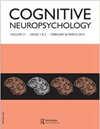在二维物体相关形状处理中,小细胞偏置信息优先于大细胞偏置信息
IF 1.7
3区 心理学
Q2 PSYCHOLOGY
引用次数: 1
摘要
我们如何在特定的坐标系统中构建心理表征,以促进我们与物体互动所需的各种计算,这一问题长期以来一直是认知科学研究的焦点(例如,Almeida等人,2020;Buxbaum & Coslett, 1997;Caramazza & Hillis, 1990a, 1990b;Hillis & Caramazza, 1995;Medina et al., 2009;Tadin et al., 2002;Vannuscorps et al., 20121a, 2001b)。举个例子:如果你想拿起你的车钥匙,你需要在一个与你的手的位置相关的坐标系中找到钥匙;然而,如果你想在一组其他对象(例如,房子钥匙,USB笔)中识别这些车钥匙,你可能需要在这些对象固有的坐标中编码可见输入,以实现感知恒定,并更好地将它们与存储的对象表示相匹配。与此相一致,现有的研究表明,根据所起作用的过程的计算目标,可以在许多坐标系上构建表征,并且这些参考框架跨越不同的处理级别(从较低到较高级别的表征框架;Almeida et al., 2020;Buxbaum & Coslett, 1997;Caramazza & Hillis, 1990a, 1990b;Hillis & Caramazza, 1995;Medina et al., 2009;Tadin et al., 2002;Vannuscorps et al., 2021a, 2021b)。在视觉感知领域,一个基本的参考框架与刺激的视网膜位置有关——也就是说,在视觉处理的最初阶段,一个刺激是相对于它的原始视网膜位置坐标来表示的。然而,其他重要的计算和表征水平发生在处理的后期阶段,当表征逐渐剥离其最基本的感官性质,并在更抽象的坐标系统类型(例如,以对象为中心;hand-centered)。Vannuscorps等人(2021a;另见Vannuscorps et al., 2021b)最近提出,在视觉感知中有一个中间处理阶段,需要使用与有界区域形状相关的坐标参考来构建二维有界空间区域——他们称之为中间形状中心表征(ISCRs)。也就是说,该形状的表示与它在视野/视网膜中的位置无关,而是与形状本身的主轴有关。在他们的论文中,他们对一个名叫Davida的人进行了细致的测试,Davida在对二维形状的方向感知方面表现出明显的缺陷。具体来说,Davida认为形状的方向在正交方向之间不断交替(即,在正确的方向和在其轴上镜像形状的方向之间)。当她做出视觉方向判断时,以及当她被要求手动执行2D形状的假定动作时(例如,指向屏幕上的箭头尖端;触摸屏幕上呈现的2D形状的末端)。因为Davida对方向的错误感知只符合形状在其主轴上旋转或镜像时可能出现的方向(而不是任何其他方向),所以她本文章由计算机程序翻译,如有差异,请以英文原文为准。
Precedence of parvocellular- over magnocellular-biased information for 2D object-related shape processing
The question of how we frame mental representations in particular coordinate systems to facilitate the kinds of computations necessary for our interactions with objects has long been the focus of research in cognitive science (e.g., Almeida et al., 2020; Buxbaum & Coslett, 1997; Caramazza & Hillis, 1990a, 1990b; Hillis & Caramazza, 1995; Medina et al., 2009; Tadin et al., 2002; Vannuscorps et al., 2021a, 2001b). Take the following examples: if you want to pick up your car keys, you will need to locate the keys within a coordinate system that relates to the position of your hands; however, if you want to identify those car keys within a set of other objects (e.g., house keys, a USB pen), you may need to encode the visible input in coordinates intrinsic to those objects in order to achieve perceptual constancy and better match them with stored object representations. In line with this, extant research has suggested that there are many coordinate systems onto which a representation can be framed depending on the computational goal of the processes at play, and that these frames of reference span different levels of processing (from lowerto higher-level representational frames; Almeida et al., 2020; Buxbaum & Coslett, 1997; Caramazza & Hillis, 1990a, 1990b; Hillis & Caramazza, 1995; Medina et al., 2009; Tadin et al., 2002; Vannuscorps et al., 2021a, 2021b). In the realm of visual perception, one basic reference frame relates to the retinal position of the stimulus – that is, at the earliest stages of visual processing, a stimulus is represented relative to its original retinotopic coordinates. However, other important computations and representational levels happen at later stages of processing, when a representation becomes progressively stripped of its most basic sensorial nature and is framed over more abstract types of coordinate systems (e.g., object-centered; hand-centered). Vannuscorps et al. (2021a; see also Vannuscorps et al., 2021b) recently suggested that there is an intermediate stage of processing in visual perception that requires framing 2D bounded regions of space using coordinate references that relate to the shape of that bounded region – what they call intermediate shapecentered representations (ISCRs). That is, the representation of that shape relates not to its location in the visual field/retina, but rather to the main axes of the shape itself. In their paper, they meticulously tested an individual – Davida – who shows a remarkable deficit for the perception of orientation of 2D shapes. Specifically, Davida perceives the orientation of shapes as continuously alternating between orthogonal orientations (i.e., between the correct orientation and orientations that result from mirroring the shape over its axes). This impairment is observed both when she makes visual orientation judgments, as well as when she is asked to manually perform putative actions over 2D shapes (e.g., point to the tip of an arrow presented on a screen; touch the extremities of a 2D shape presented on the screen). Because Davida’s misperception of orientation conforms exclusively to orientations that are possible if the shape is rotated or mirrored over its main axis (and not any other orientation), her
求助全文
通过发布文献求助,成功后即可免费获取论文全文。
去求助
来源期刊

Cognitive Neuropsychology
医学-心理学
CiteScore
5.50
自引率
11.80%
发文量
23
审稿时长
>12 weeks
期刊介绍:
Cognitive Neuropsychology is of interest to cognitive scientists and neuroscientists, neuropsychologists, neurologists, psycholinguists, speech pathologists, physiotherapists, and psychiatrists.
 求助内容:
求助内容: 应助结果提醒方式:
应助结果提醒方式:


